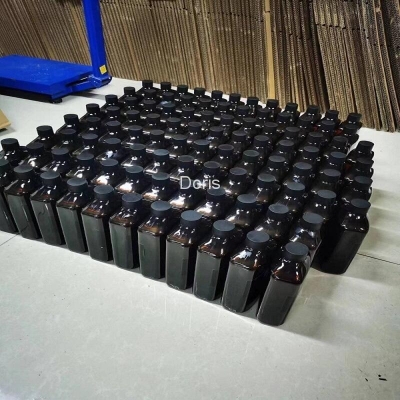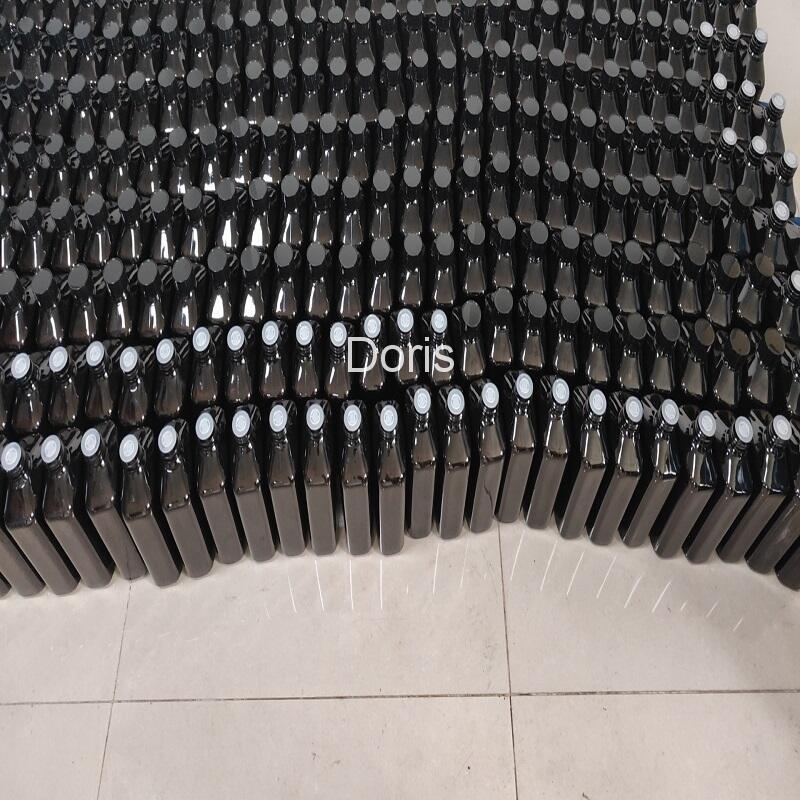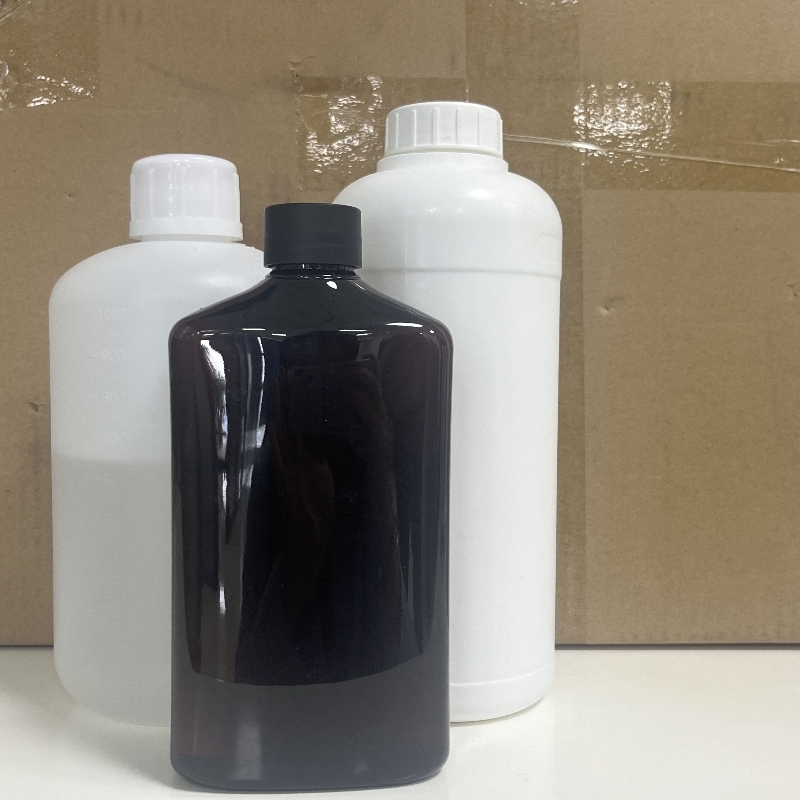Basic test methods for wires and cables
-
Last Update: 2009-10-13
-
Source: Internet
-
Author: User
Search more information of high quality chemicals, good prices and reliable suppliers, visit
www.echemi.com
Basic test methods for wires and cables basic structure (I) conductor 1, conductor resistance: except for TPT, TS and TST tin core wires, UL does not require to measure the conductor resistance of wire and cable products 2 Wire diameter: generally, the wire diameter of wires and cables is even AWG, such as 18awg, 16awg, etc., with the exception of odd AWG wires 3 There are two methods to determine the cross-sectional area of Conductor: A measure the sum of cross-sectional areas of each stranded core wire, and take the average diameter of at least 7 wires as the average core wire diameter D is calculated by miles: conductor cross-sectional area CMA = ND2 (CMA: Circular mil area) is calculated by mm: conductor = 0.7854 * ND2, where n is the number of cores in conductor structure Core diameter measurement: according to ul1581 section 200, each core diameter must be measured with micrometer with accuracy of 0.01mm (0.001 inch), and both ends are plane B Weighing method, see ul1581 section 210 During the measurement, it is found that the measured value is less than the required value (ul1581, table 20.1), which can be confirmed by another of the two methods (Note: DC resistance measurement cannot be used as Zui final judgment standard for CMA measurement) Conductor insulation thickness 1 Measuring tool: micrometer commonly used by micrometer, the measuring end face is plane, Zui small reading: 0.01mm end face is 1.98 * 9.5mm, the average insulation thickness of the load micrometer (conductor insulation thickness) with the load of 10G is measured: from the beginning of 10 inches from the end line, every 10 inches is a measuring point, and the outer diameter of the conductor and the diameter of the conductor at 5 points are measured Insulation thickness = (conductor outer diameter - conductor diameter) / 2 average the insulation thickness at 5 points to obtain the average insulation thickness Zui small insulation thickness measurement: measuring tool: pin gauge micrometer, note that this method is applicable to the wire structure of 18awg or larger wire diameter Cut off the insulator of the core conductor and place it on the pin of micrometer When measuring, first lift the load gently, and slowly rotate the insulator Reading the small value of Zui is regarded as the small thickness of conductor insulator For wires less than 18 AWG, the reading microscope method can be used 2 Measurement tool: when sampling with reading microscope, carefully take out all conductor cores, slice vertically along the direction of conductor insulator, and measure the thickness of Zui thin part under microscope as the small thickness of conductor insulation layer Generally, the measurement result of reading microscope (with an accuracy of 0.001mm) is taken as the reference standard of Zui terminal In the actual measurement, it is found that the small thickness of Zui measured by a coil of wire is less than the specified value and more than 2mils, so it is determined that the coil of wire is unqualified If the measured value is less than the specified value and no more than 2mils, two samples shall be taken at the place 1 foot away from the coil wire for measurement If one of the results is less than the Zui small value, the coil wire shall be judged as unqualified If both the measured values are up to the standard, the coil wire shall be judged as qualified The outer diameter and cable diameter of the outer quilt at 5 points along the measured phase distance inch of the outer quilt average outer quilt thickness The outer quilt thickness = (outer quilt outer diameter - cable diameter) / 2 the average outer quilt thickness is the average of the measured values of 5 points Outer coating Zui small thickness: the same as the conductor Zui small insulation thickness The outer and inner surfaces of the quilt shall be carefully polished and flattened, and then the load micrometer with the load of 85g and the cross section diameter of 6.4mm shall be used for measurement Reading microscope measurement: the method is the same as that of conductor insulation thickness measurement Comparison table of average thickness of common wires and Zui small thickness See UL62, table: 16.2, 16.4, 16.6, 16.8 The average value of the distance between the cores and the 10 strands of the core wire is taken as the average of the core wire During the measurement, the insulation sheath of about ten strands is removed and any core wire is taken as the object for measurement Pay attention not to damage the core wire when peeling, resulting in core wire breakage The stranded length of the conductor is also taken as the average stranded length of the conductor During sampling, it should be noted that due to the large internal stress and torsion when the conductor is stranded, the original stranded structure may be loose when the outer cover is removed For this reason, when sampling, reserve a section of sheathed wire without removing the quilt, and then pull off part of the quilt along the cable direction with a sharp knife Zui is good to see the wire to be tested, and the wire and the quilt are still closely connected Straighten the sample horizontally, and measure the distance between ten stranding points of a certain conductor as the stranding distance, because the original stranding distance will increase after the outer sheath is formed due to the relationship of stress during cable forming Refer to UL62 for the large stranded distance of various cores Zui Refer to UL62 (II) comparison table of combustion grade and test method of combustion test wire for large stranded distance of various wire diameters (III) corresponding voltage of ul62table51.1 shall be applied between wires in voltage resistant test cable, and the voltage shall be slowly added from zero to rated value within 10s to 60s for 1 minute during pressurization The criterion is the circuit alarm of hi pot during the rise, fall and hold On the other hand, the insulation resistance test can also produce similar effect in some programs, so it is a positive and simple method to test the leakage first (4) Spark test for single core power lines, such as cxtw line, the voltage resistance test is spark test, while for multi-core power lines, spark test can also be used in daily production test instead of voltage resistance test Key points of spark test: see table 900.1 for the length and position of chrome plated copper bead mill The interval and arrangement of bead mill are specified from horizontal and vertical directions In daily production, it is necessary to regularly check whether the bead mill is dropped If any part is found incomplete, it should be replaced in time (2) See table 900.2 for the relationship between the length L of V-type test slot, test frequency and the large outgoing rate of production wire Zui It can be seen that the working frequency can be increased, the outgoing rate can be greatly improved, and the production efficiency can also be greatly improved (3) Line grounding: keep the conductor, release and take-up wheel and spark machine well grounded The paying off end is bare copper wire: the paying off end is grounded, the receiving end is not grounded, and the continuity of the wire does not need to be tested The pay off end is insulated wire: the wire is connected with the take-up and pay off wheel, and the take-up and pay off ends must be grounded For 10 AWG or finer wires, the continuity is not tested Test voltage: see table 900.2 (V) insulation resistance test 1 Adjust the DC voltage of common wire and cable insulation megger to 100-500v, and immerse the wire of 50ft-5000ft in the water tank for 2 hours One electrode of the megger is connected to the copper plate electrode of the water tank, and the other electrode is connected to the wire and wire to be tested The measurement time is 60 seconds, and the insulation resistance of 1000 foot wire is greater than 2.5m when the qualification standard is 15.6 ℃ The measurement value of 10 ℃ - 29.4 ℃ water temperature is converted to the value of 15.6 ℃ and the length is 1000 feet: R * L * m * TCF 1000 R: megger reading L: measured wire length m: megger multiplying ratio TCF: temperature correction factor TCF reference table can be seen in ul1581 table 52.1 2 Commonly used outdoor "W" wires and cables, such as spt-2w, sjtw, cxtw, etc The test method of short-time insulation resistance is the same as that of ordinary wires and cables, but the qualification criteria are totally different The resistance value of "W" wire is much higher For example, cxtw22awg, the qualification standard is 15.6 ℃ 225m / 1000 ft (1) The judgment standards are spt-2w, spt-1w, xtw and cxw See ul62table35.1 sjtw and other sheathed wires See ul62table32.1 for the insulation resistance listed in the table, which is the short-time immersion resistance value at 15.6 ℃ In addition, the insulation resistance shall be tested with 50 ℃ temperature rise and long-time immersion (2) To determine the TCF, first determine the impedance factor C, then find the corresponding M factor from ul62table33.1, and apply the formula above to calculate the impedance Note: for sheathed cables, such as SVT, sjtw, the insulation resistance listed in the table is the insulation resistance between the wires in the sheath, so during the measurement, the outer sheath shall be cut off and then soaked for test Determination of impedance factor C: see UL62 section 34 Principle: in the process of heating and cooling two samples, measure the resistance value of five fixed temperature points, draw a graph on the semi logarithmic coordinate, calculate the resistance value at 15.6 ℃, read the resistance value at 16.1 ℃, and then divide the two to get the C value (6) Tensile test before and after aging 1 How to determine the tensile speed of the tester? Tensile rate: when the tensile rate is not specified in the tables in section 50 of ul1581, the rate is usually 500 + 25mm / min 2 How to determine the tensile index of the material? UL62 has now attributed the physical properties of conventional flexible cords to table 5.2 (insulator) and table 7.2 (quilt) In the past, the physical properties of all wire plastic materials were listed in ul1581 table50 series For example, spt-2105 ℃ wire, its physical property requirement is: spt-2 is integral PVC cable, so ul62table15.1 or ul1581table50182 is applied Class corresponding to 105 ℃ is 2.11, tensile%
This article is an English version of an article which is originally in the Chinese language on echemi.com and is provided for information purposes only.
This website makes no representation or warranty of any kind, either expressed or implied, as to the accuracy, completeness ownership or reliability of
the article or any translations thereof. If you have any concerns or complaints relating to the article, please send an email, providing a detailed
description of the concern or complaint, to
service@echemi.com. A staff member will contact you within 5 working days. Once verified, infringing content
will be removed immediately.







